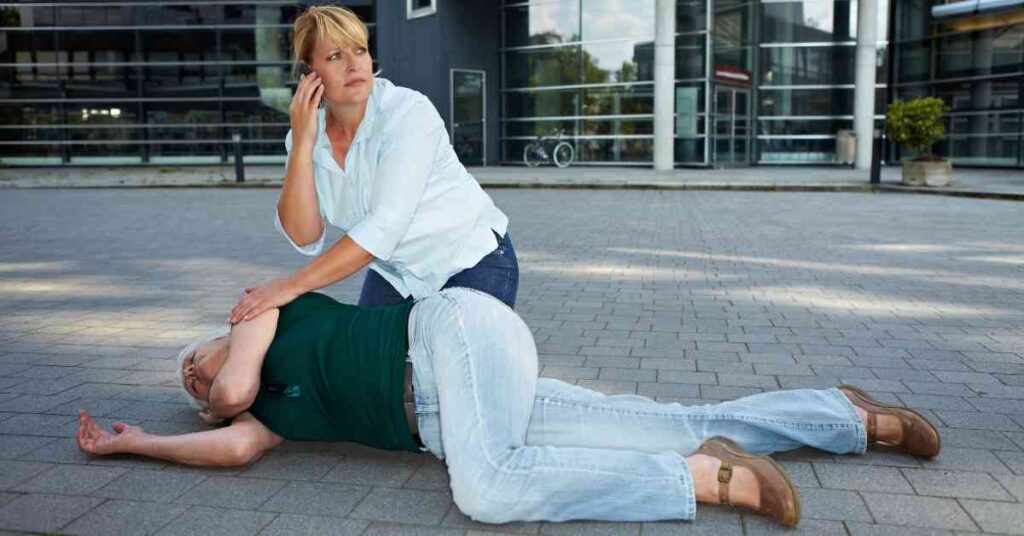Seizure First Aid: How to Help Someone Safely

Witnessing someone having a seizure can be a frightening experience, especially if you’re unsure of what to do. Seizures can happen for many reasons, including epilepsy, head injuries, or other medical conditions. While most seizures last only a few minutes and stop on their own, knowing how to respond can help keep the person safe and prevent injuries.
This guide will walk you through the steps to assist someone experiencing a seizure, focusing on safety precautions and how to provide effective first aid.
What Is a Seizure?
A seizure is a sudden burst of electrical activity in the brain that affects how someone moves, behaves, or feels. Seizures can look different depending on the person and the type of seizure. For example:
- Generalised Tonic-Clonic Seizures: These are the most recognised seizures, involving jerking movements, stiffness, and loss of consciousness.
- Focal Seizures: These may cause unusual movements, staring, or confusion, but the person may remain conscious.
- Absence Seizures: Often seen in children, these involve brief moments of “zoning out” or staring into space.
No matter the type, your role during a seizure is to stay calm, ensure the person is safe, and follow basic first aid steps.
Steps for Seizure First Aid

1. Stay Calm and Assess the Situation
- If someone has a seizure, the first thing to do is stay calm. Most seizures only last 1–3 minutes and stop on their own.
- Check if the person is in a safe place. If they are near something dangerous, like stairs, sharp objects, or water, try to move those hazards out of the way.
2. Time the Seizure
- Use a watch or phone to track how long the seizure lasts. If it goes on for more than 5 minutes, call emergency services immediately.
3. Protect the Person from Injury
- Move Objects Away: Clear the area of sharp or hard objects that could cause harm.
- Place Something Soft Under Their Head: This prevents head injuries during jerking movements.
- Do Not Hold Them Down: Trying to restrain the person can cause injuries.
- Do Not Put Anything in Their Mouth: This is a common myth. A person cannot swallow their tongue during a seizure, and placing objects in their mouth can block their airway or cause dental injuries.
4. Turn Them Onto Their Side
- If possible, gently roll the person onto their side. This helps keep their airway clear and prevents choking if they vomit.
5. Stay With Them
- Stay close until the seizure ends. Once it’s over, the person may be confused, tired, or embarrassed. Reassure them and help them feel safe.
When to Call for Emergency Help
Most seizures stop on their own, but you should call for emergency assistance if:
- The seizure lasts longer than 5 minutes.
- The person has another seizure immediately after the first one.
- The person is injured during the seizure.
- The person is pregnant, has diabetes, or is having a seizure for the first time.
- They are struggling to breathe or regain consciousness after the seizure ends.
What to Do After a Seizure

When the seizure stops, the person may feel confused or tired. Here’s how to help:
- Reassure Them: Let them know what happened and that they are safe.
- Help Them Rest: If possible, guide them to a comfortable position and allow them to rest.
- Check for Injuries: Look for any signs of injury caused during the seizure, like cuts or bruises, and provide basic first aid if needed.
- Stay With Them Until Fully Alert: Ensure they are fully awake and aware before leaving them alone.
Safety Precautions to Remember
- Don’t Panic: Stay calm and focused to provide the best help.
- Never Put Anything in Their Mouth: This can cause more harm than good.
- Keep the Area Clear: Your main goal is to protect the person from injury.
- Avoid Giving Food or Drink Right Away: Wait until they are fully alert and able to swallow safely.
Helping Someone with Recurrent Seizures
If the person has epilepsy or a history of seizures, they might have a seizure management plan. Ask them (or a loved one) about their specific needs and any medications they might take.
Want more? We’ve got you covered…
Our Baby First Aid Courses
Our baby first aid courses are available in person in your home and online. We run classes in your home with groups of 2, 4 or up to 10 in Sydney & Melbourne and you can book in 3 easy steps!
- Pick your class
- Follow the prompts to purchase
- We will contact you within 24 hours to lock in your date of choice
Our First Aid Certificate Courses
We run most of the popular first aid courses Australia wide. HLTAID011 Provide First Aid, HLTAID009 Provide CPR, HLTAID012 Provide First Aid in an Education & Care Setting, RAMOAP (anaphylaxis), Mental Health first aid and CPR/LVR to name a few.
Book your public spot online or contact us if you have a group of 5+ people for onsite training.
Here are some other resources you may enjoy!
FREE GUIDE: Your Virtual Baby First Aid Kit
FREE GUIDE: Introducing Common Allergy Foods & Allergic Reactions
FREE Workplace Emergency Preparedness Plan: Grab this at the bottom of every page!
Follow for baby & child first aid and allergy info and tips on Instagram & TikTok, all @thenestcpr

